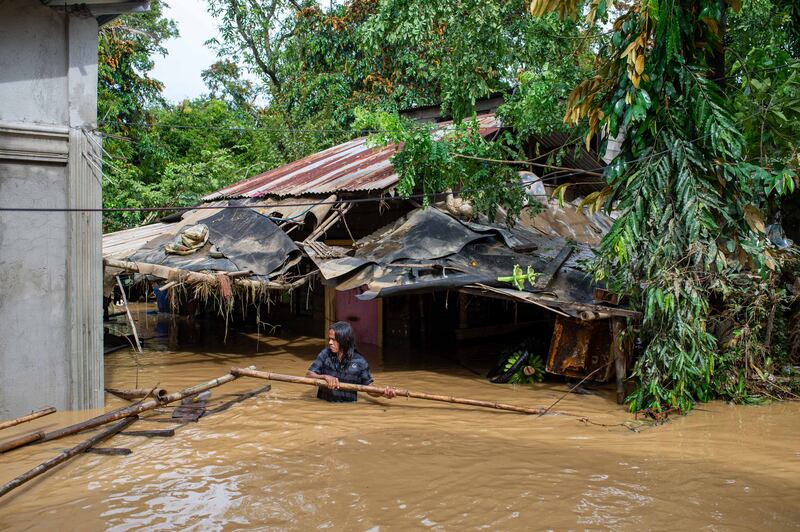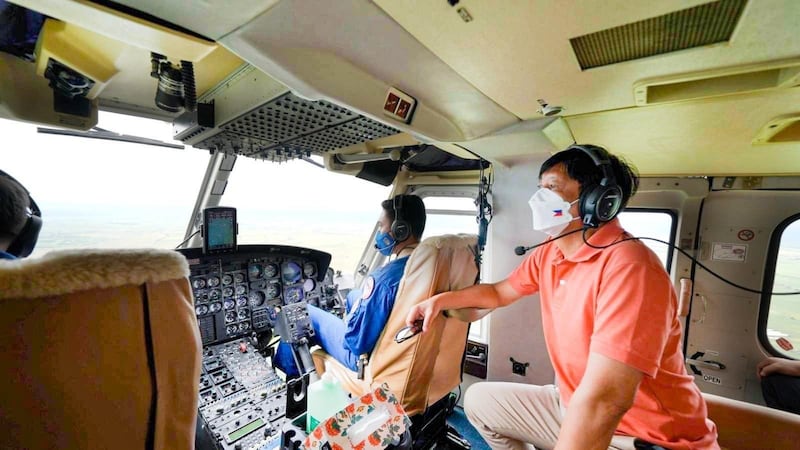Super Typhoon Noru, the most powerful storm to strike the Philippine this year, left at least five people dead – all rescuers – caused massive flooding, and forced the evacuation of thousands, after it made landfall over Quezon province on Sunday evening.
Residents in Manila and surrounding areas had prepared for the worst, but apart from non-stop rains, its effect was noticeably weaker compared with previous typhoons that have hit the Southeast Asian nation, which gets an average of 20 weather disturbances a year.
Daniel Fernando, governor of Bulacan province, confirmed Monday that five members of the local emergency agency died after their boat capsized amid a flash-flood.
“It is saddening. They are our heroes who really risk their lives for our fellow men in times of calamities. But this happened. It was unexpected accident,” Fernando told Manila radio station DZMM.
According to witnesses, the rescuers were crossing a small waterway on a small boat strong currents fed by runoff water from nearby mountains tipped it over, he said.
“They were taken away by the water and drowned,” he said.
The super typhoon damaged electricity lines, houses and shanties, many along coastal villages, caused widespread flooding in low lying areas, and affected more than 800,000 people. Metro Manila, with some 12 million people that was in the path of the cyclone, was largely spared.
Noru, the 11th storm this year, whipped up winds of 195 kilometers an hour and gusts of up to 240 kilometers (121.1 miles) per hour, according to the state meteorological agency PAGASA.
But the typhoon slightly weakened when it hit the Sierra Madre, a 540-kilometer long mountain range that stretches through several provinces on the country’s main Luzon island and acts as a natural barrier to weather disturbances, officials said.

Still, many parts of the agricultural Bulacan province were still flooded, with some under neck-deep waters, as of Monday afternoon, he said.
Roderick Tiongson, the mayor of Bulacan’s San Miguel town, said some 49 villages were under water, but added that about a thousand people were evacuated to safer ground before the storm made landfall. He appealed for additional help from the public, and said they needed blankets, water and food.
Tiongson blamed quarrying activities in Bulacan’s mountain areas for the flooding.
“Let us preserve and take care of our mountain ranges because if it were not for the Sierra Madre, Karding would have hit with full force on San Miguel,” he said, using the Filipino name for Super Typhoon Noru.
In Manila, President Ferdinand Marcos Jr., who presided over an emergency meeting with disaster officials, conducted an aerial inspection of areas hit hard by the typhoon.
“Presently, we’re organizing an airlift for [relief] supplies. Right now, those are the first areas we are focusing on. After we attend to basics, food, water, shelter, clothes, all of these things, and then the [Department of Social Welfare and Development] is also prepared to provide for those who are going to need living assistance,” Marcos said.
“So the whole range of assistance is prepared and ready to go. But right now we will put first their immediate needs,” he added.

Richard Gordon, and ex-senator and chairman of the Philippine Red Cross, said emergency relief assistance was being prioritized, focused on food and water.
“Our water tankers for drinking water and pay loaders to quickly clear off debris, mud and fallen trees and [to] make roads accessible to reach communities are also in place,” Gordon said.
Alberto Bocanegra, head of the Philippine Country Office of the International Federation of Red Cross, said the agency was working closely with Philippine officials and helping with relief and providing support.
“These weather-related events are intensifying and becoming more frequent. The super storm that hit southeastern Philippines was a mere ten months ago, and the people affected are barely picking up the pieces. We must be effective and quick to adapt no matter how bad the situation will be,” Bocanegra said.
The Philippines endures about 20 tropical storms and typhoons annually, some of which are devastating.
In November 2013, more than 6,500 people died or were missing after Super Typhoon Haiyan battered the central Philippines, causing massive storm surges that inundated coastal communities.
Luis Liwanag and Basilio Sepe in Manila contributed to this report.
